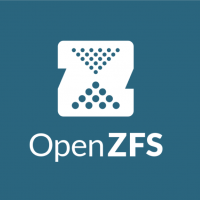By default ZFS uses the lzjb compression algorithm; you can select others when setting compression on a ZFS folder. To try another one do the following:
sudo zfs set compression=gzip [zfs dataset]
This changes the compression algorithm to gzip. By default this sets it to gzip-6 compression; we can actually specify what level we want with:
sudo zfs set compression=gzip-[1-9] [zfs dataset]
e.g.
sudo zfs set compression=gzip-8 kepler/data
Note that you don’t need the leading / for the pool, and that you can set this at a pool level and not just on sub-datasets. 1 is the lowest level of compression (less CPU-intensive, less compressed) where gzip-9 is the opposite – often quite CPU intensive and offers the most compression. This isn’t necessarily a linear scale, mind, and the type of data you are compressing will have a huge impact on what sort of returns you’ll see. Try various levels out on your data, checking the CPU usage as you go and the compression efficiency afterwards – you may find that 9 is too CPU-intensive, or that you don’t get a great deal of benefit after a certain point. Note that when you change the compression level it only affects new data written to the ZFS dataset; an easy way of testing this is to make several sets, set a different level of compression on each and copy some typical data to them one by one while observing. We discussed checking your compression efficiency in a previous post.
Compression doesn’t just benefit us in terms of space saved, however – it can also greatly improve disk performance at a cost of CPU usage. Try some benchmarks on compression-enabled datsets and see if you notice any improvement – it can be anywhere from slight to significant, depending on your setup.
